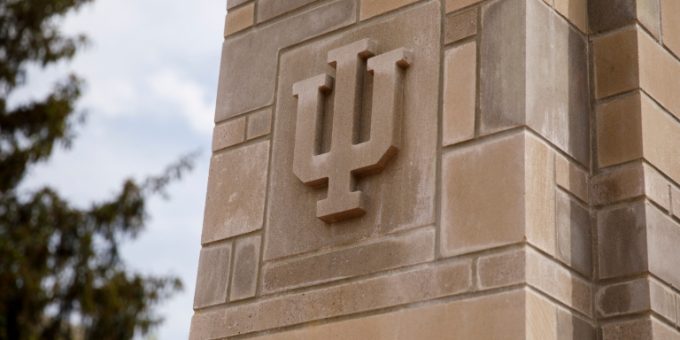
(BLOOMINGTON) – Nine Indiana University leaders and faculty, including IU President Michael A. McRobbie and IU South Bend Chancellor Susan Elrod, have been elected fellows of the American Association for the Advancement of Science, an honor that recognizes their outstanding contributions to the progress of science and research.
Founded in 1848, AAAS is the world’s largest general scientific society and publisher of the journal Science. The nine faculty members’ election brings the number of AAAS fellows affiliated with IU to 120, with more than half (72) in the past 13 years.
Election as a fellow is an honor bestowed upon AAAS members by their peers. The fellows will be formally announced in the AAAS News & Notes section of the Nov. 28 issue of the journal Science.
The 2019 IU fellows and their AAAS citations of merit are:
Lynda Bonewald
Bonewald is the founding director of the IU School of Medicine’s Indiana Center for Musculoskeletal Health, which was established in 2017 to prevent and treat musculoskeletal disease. She was recognized for her distinguished contributions to the field of anatomy and cell biology, particularly for studies of the role of the osteocyte in muscle-bone interactions. Her research focuses on the study of osteocytes, which are cells embedded in the mineralized matrix of bone, including their biology and function. More recently, her work has focused on the communication that occurs between osteocytes and muscle, showing that these tissues interact not only mechanically but through soluble factors. professor of anatomy, cell biology and physiology, and professor of orthopedic surgery at the IU School of Medicine.
Brian R. Calvi
Calvi is a biologist and was recognized for his uses of fruit flies — or Drosophila — as a model system to discover how cells regulate their division and the copying of their DNA, including how aberrations in these processes can cause diseases such as developmental malformations and cancer. Most recently, he was awarded over $1.2 million by the NIH to study the regulation of cell division and growth and their relationship to genome instability in cancer. He also serves as a co-director of FlyBase, a consortium of IU, Harvard and Cambridge University, which is the world’s most comprehensive database of fruit fly DNA sequence data.
Susan Elrod
A nationally recognized leader and scholar in STEM higher education programs and institutional change, Elrod was recognized for her distinguished service to STEM education and significant contributions through research on understanding the systemic change necessary for institutional transformation in undergraduate biology education. Elrod focuses her research on the national leadership of initiatives in the areas of student access, persistence and completion. This includes the development of research-based, practice-informed models that describe strategic approaches for campus leaders to more effectively achieve institutional systemic change to improve STEM student success. She became chancellor of IU South Bend in July.
James E. Klaunig
Klaunig is a toxicologist who studies the cellular and molecular mechanisms by which environmental and pharmaceutical chemicals induce toxicity, particularly cancer. He was recognized for distinguished contributions to the fields of pathology and toxicology, particularly in the area of chemically induced carcinogenesis and the application to human risk assessment. His work has led to a further understanding of the early changes involved in cancer processes and has been used by regulatory agencies in the development of scientifically based human risk assessment. He has also been strongly involved in graduate education throughout his career, including developing and initiating the Ph.D. program in environmental health at the IU School of Public Health-Bloomington.
Justin P. Kumar
Kumar is a developmental biologist who uses the compound eye of fruit flies to understand how signaling pathways, transcriptional networks, and epigenetic enzymes guide multipotent cells — or cells with the capacity to develop into multiple cell types — to their final form during development. He was recognized for groundbreaking and trendsetting contributions in Drosophila eye development, which represent fundamental research on ontogenetic pathways having major implications for certain human visual system diseases. Due to the conservation of these processes across species — from flies to humans — his work has also helped inform understanding of several congenital disorders that affect the human eye, such as the absence of the iris, or aniridia, and the absence of the eyes, or anophthalmia.
Michael A. McRobbie
McRobbie, who was appointed the 18th president of IU in 2007, holds faculty appointments in computer science, philosophy, cognitive science, informatics, and computer technology, and he served as IU’s vice president for information technology from 1997 to 2007. He was recognized for his distinguished contributions to the field of informatics, particularly in the development of high-speed computing, network development, cybersecurity and artificial intelligence In these roles, he has played a major role in the creation of the Luddy School of Informatics, Computing, and Engineering, from its inception as the School of Informatics, and the creation of University Information Technology Services. He also directed the development of the Indiana I-Light optical fiber network and established the Global Research Network Operations Center, known as GlobalNOC; the Center for Applied Cybersecurity Research; the Research and Education Networks Information Sharing and Analysis Center; and IU’s Pervasive Technology Laboratories.
Krishnan Raghavachari
Raghavachari is a theoretical chemist whose research focuses on the development and application of new methods in computational quantum chemistry. He was recognized for his well-known contributions to the development of electron correlation theories, including a highly accurate technique, called CCSD(T), which is often called “the gold standard of quantum chemistry.” Most recently, his lab has been focused on the development of novel theoretical methods for the treatment of large molecules to address a broad spectrum of problems in catalysis, drug design, materials chemistry, and nanoscience.
Michael VanNieuwenhze
VanNieuwenhze is a chemist specializing in the chemistry and biology of bacterial cell wall biosynthesis. He was recognized for his distinguished contributions to the fields of chemistry and bacterial cell biology, particularly for methods to visualize bacterial cell wall biosynthesis and bacterial cell division. His research focuses on developing methods to visualize the dynamics of bacterial cell wall biosynthesis and bacterial cell division, as well as the study of peptide antibiotics that inhibit the bacterial cell wall biosynthetic pathway. This work includes developing a new class of fluorescent D-amino acids, which have helped revolutionize the study of bacterial cell wall biosynthesis at the molecular level, as well as its role in bacterial cell division.
Kevin Zumbrun
Zumbrun is a mathematician who studies physical phenomena, particularly flow in gas and fluid dynamics, using nonlinear partial differential equations and dynamical system techniques. He was recognized for his distinguished contributions to the field of nonlinear differential equations and applied mathematical analysis, particularly in the field of shock wave stability and dynamical systems. His lab is also known for the marriage of abstract mathematics with physical intuition and numerics, including computer-aided proofs to understand complex phenomena. This work has resulted in the successful determination of shock and detonation wave stability in gas dynamics and, more recently, stability and behavior in periodic “roll waves” in inclined shallow water flow, a phenomenon observable in canals, waterways or even gutters on a rainy day.












